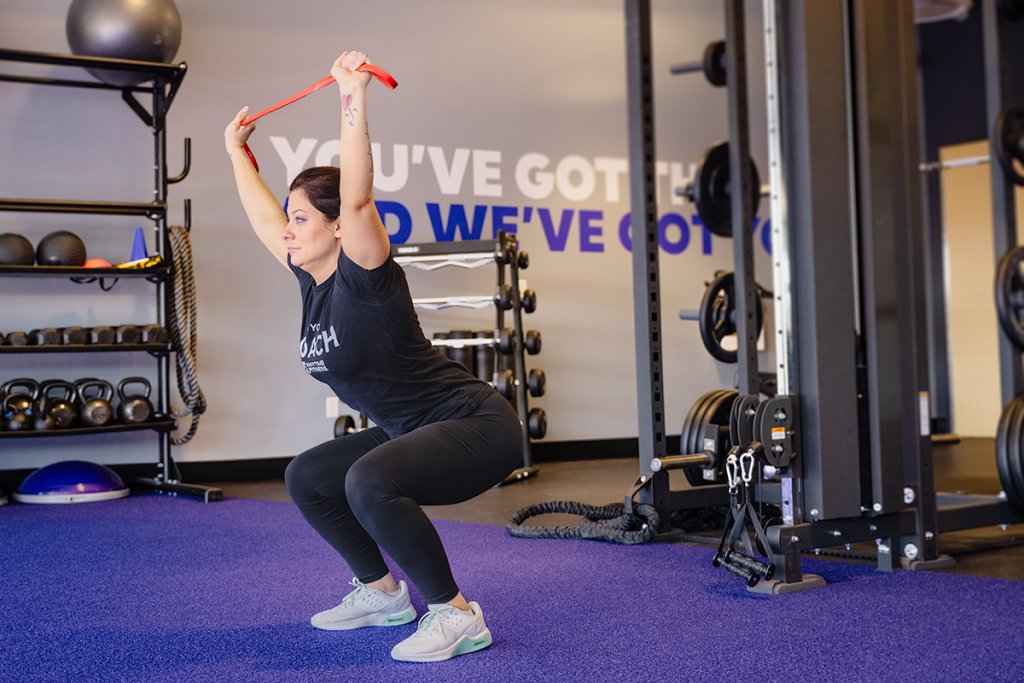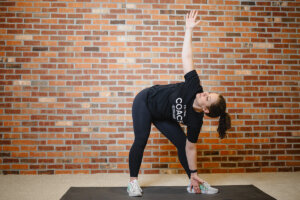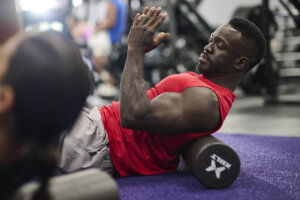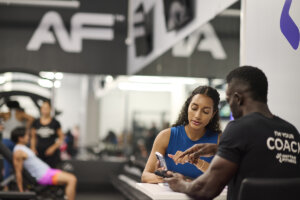While we know fitness and exercise is for everyone (yes, everyone), we also know working out should not be treated with a one-size-fits-all approach. Whether it’s adjusting the weights you’re using or making exercise modifications to the movement itself, there are plenty of ways to work out effectively your way.
Common reasons for needing exercise modifications
There are a tons reasons someone might need to make workout modifications, with some of the most common being:
- An exercise movement is causing pain or discomfort
- You’re new to working out and aren’t quite able to perform certain movements with proper form (yet!)
- A workout may be too easy or too challenging overall
- You’re pregnant or in postpartum stages
- You’re still sore from a recent workout
Working with a personal trainer
One thing to consider is that a personal trainer or coach can prescribe the perfect workouts for your body, fitness level, and health goals. With personal training, the focus is on you. A Fitness Consultation is a free perk of being an Anytime Fitness member. Here’s what you can expect during the hour-long session with a Coach:
- You and the Coach will discuss your health and fitness goals, your health and exercise history, any pre-existing conditions or concerns you have, as well as your needs for a workout program.
- Your Coach will then take you through a short set of exercises that serve as a warm-up for you, and an assessment for them, so they’re able to evaluate how your body currently moves.
- This is the time to let your Coach know if any of the exercises cause you discomfort or difficulty. They can show you some modified exercises that can help you avoid pain or injury.
At the end of the Fitness Consultation, you’ll walk away with a free, personalized 30-day fitness plan and a better understanding of how to approach exercise modifications based on your goals and needs.
In the meantime, let’s break down some of the common reasons you might need to make exercise modifications and some options for three of the most common bodyweight exercises: squats, lunges, and deadlifts.
How to modify exercises
An important thing to remember is that modifying an exercise doesn’t mean you’re “making it easier.” What we’re actually doing is making small adjustments that allow the exercise to effectively work your unique body. Plus, as your body changes, you’ll likely want to keep modifying as well. Here are a few ways to make workout modifications:
- Modify your form
One of the most common ways trainers approach exercise modifications is through form adjustments. “If you’re not able to perform the exercise with proper form yet, there are ways to start with fundamental movements that progress as you get stronger, more stable, and more confident,” says AF Coach Heather Anderson. - Adjust the intensity
This can be done by adding more or less weight, doing more or fewer reps, or switching up the amount of rest time you give yourself. When it comes to modified workouts for beginners, for example, it might be about giving yourself a little more time to move from one move to the next. “Workouts cause your heart rate to rise, and this is a healthy and normal response but can take time to adjust to,” says Coach Heather. - Vary your exercises
Doing the same exercises every time you work out can get boring and reduce the effectiveness of your workouts. To keep things interesting, try adding some new exercises — or simply a few modified exercises — to your routine. This can be as simple as changing the grip on your weights, trying new equipment, or exploring a few deadlift alternatives. - Get a workout partner
Working out with a partner can be a great approach to modifying your workout. You can push each other to work harder, try new exercises together, and hold each other accountable. Having a workout partner can also make your workouts more fun and enjoyable. - Join a workout class
Take getting a workout buddy one step further with a group class. “Group training is a great place to get in-person instruction from a Coach, with an entire workout — from warm-up to recovery,” says Coach Heather. That means getting real-time modifications while also having the energy and motivation that comes from a class environment.
Note: If exercising is consistently causing you significant pain or physical discomfort, see a professional for medical advice. Exercise should under no circumstance cause injury.
3 common exercises — modified for perfect form
“Moves that frequently require exercise modifications are squats, lunges, and deadlifts,” explains Coach Heather. Here are a few ways to adjust these three moves that don’t compromise effectiveness.
1. Squat Alternatives
There are a few reasons you may need to modify your squats, and we’ve got squat alternatives for each.
If your knees are caving in:
If your knees are caving in as you lower into your squat (aka “knee valgus”), there could be an imbalance between the strength of the adductors (inner thighs) and abductors (outer thighs).
Modified exercise: Add a resistance band
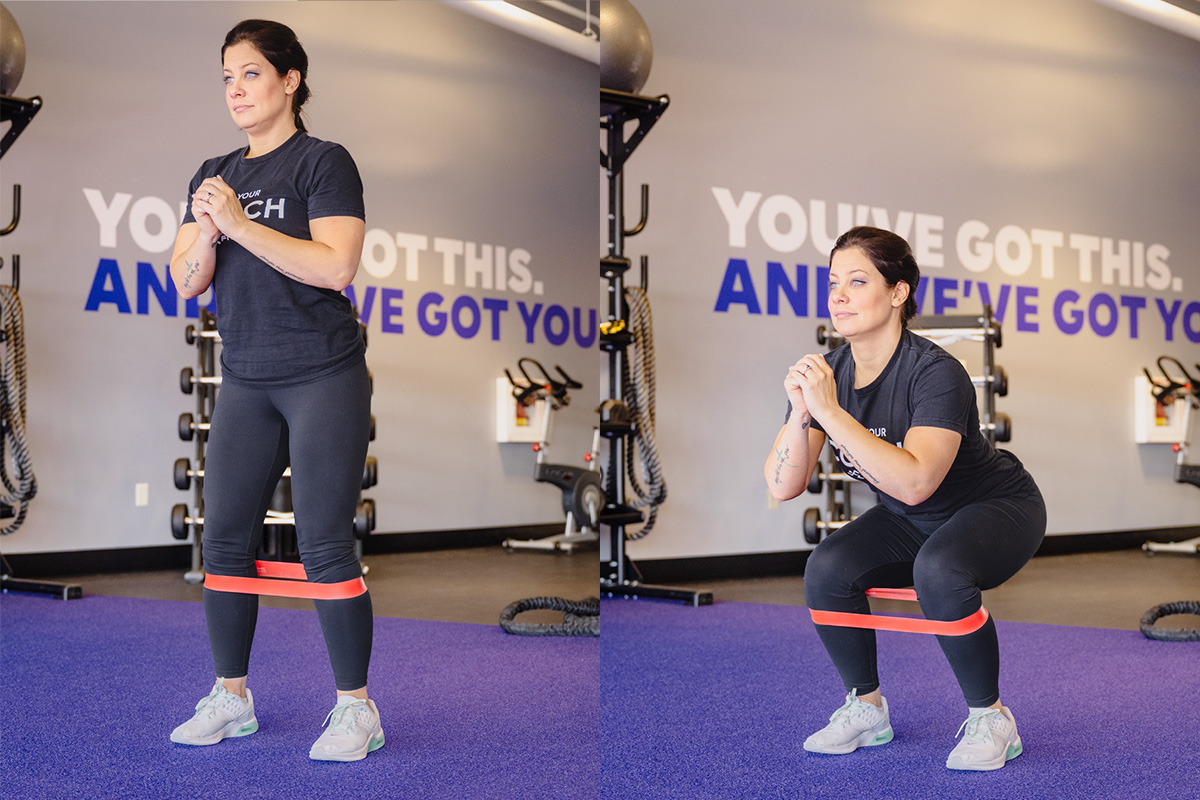
Try looping a mini-band around both legs, just below the knees. This will add resistance to your squat to prompt your outer thighs to engage and keep your knees from caving inward.
If your heels are lifting off the floor:
If your heels are lifting off the floor during your squat, there could be one or more factors: weak hip muscles (which can be addressed with the same squat alternative above) or low ankle mobility.
Modified exercise: Use wedges or plates
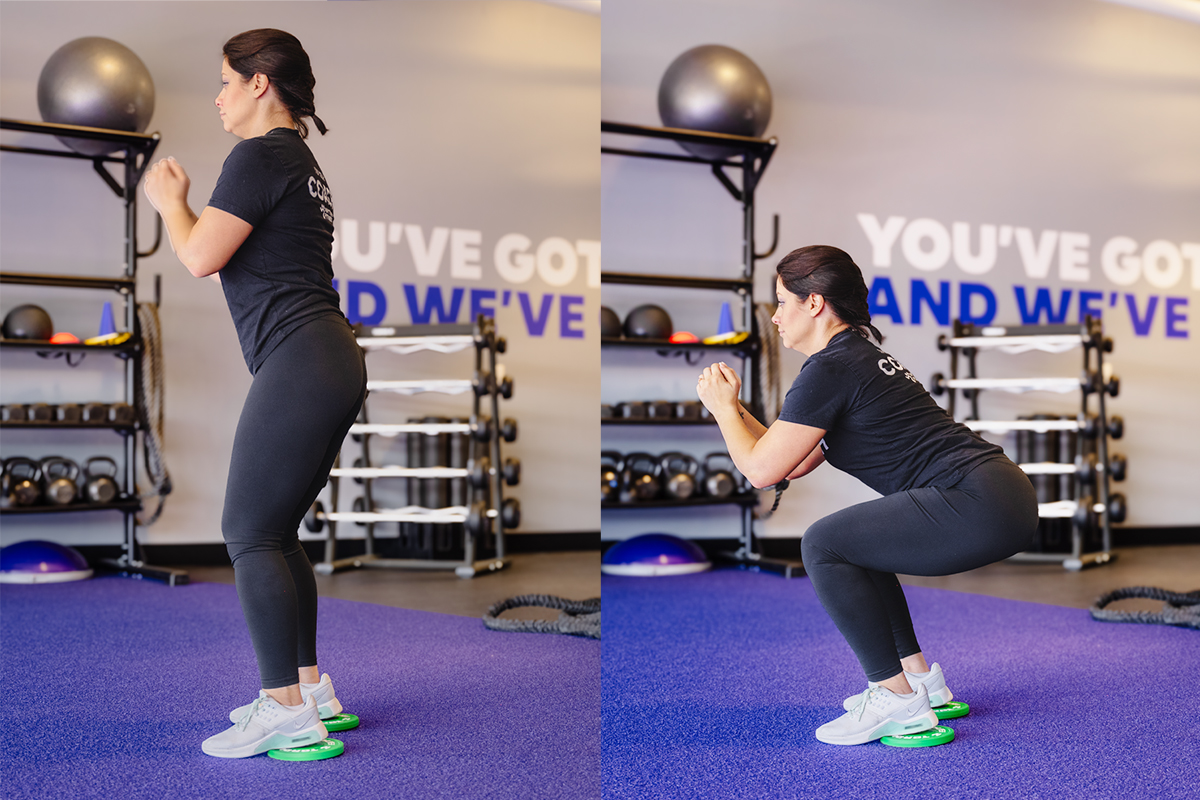
To modify the squat for low ankle mobility, try placing small wedges or 2.5 lbs. plates under the heels before performing the squat. This allows the body to press up from the bottom of the squat using the entire foot with more stability.
If your torso leans forward:
If your torso leans forward excessively during your squat, you can correct this by practicing a banded overhead squat.
Modified exercise: Banded Overhead Squat
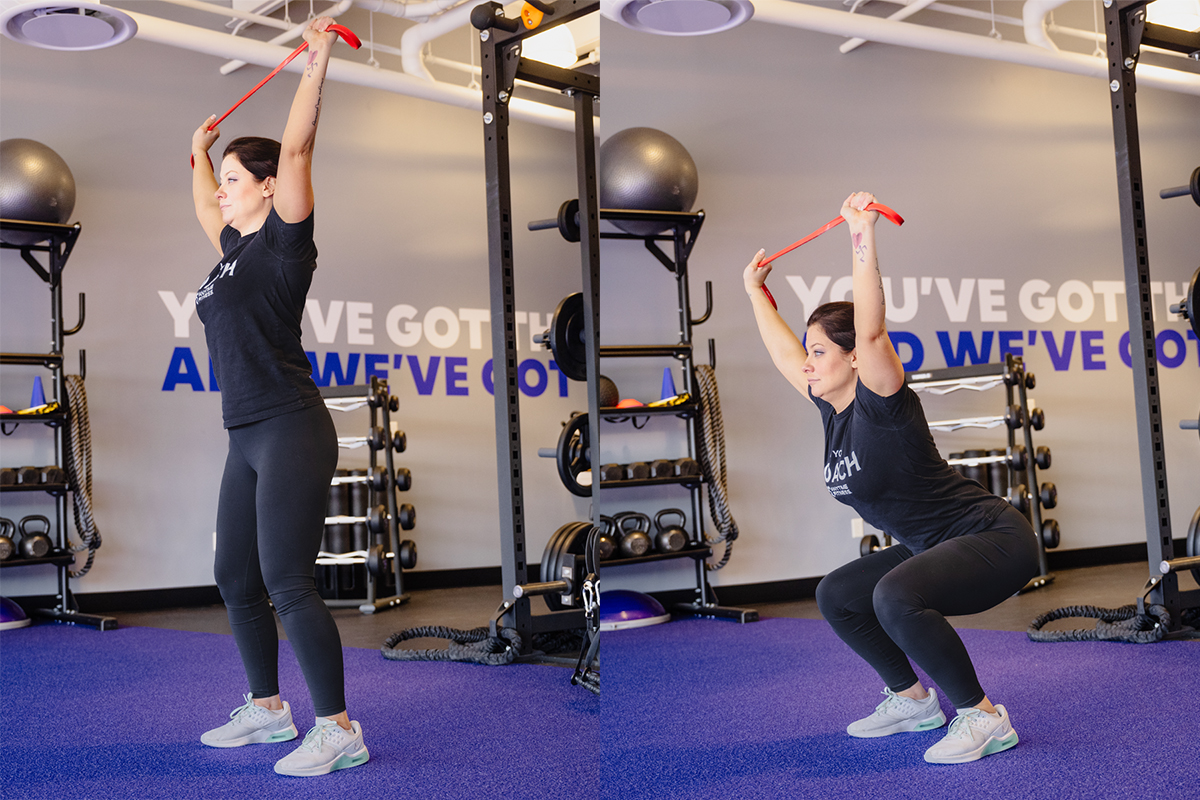
To help keep your torso stable, try holding a resistance band (with moderate tension) overhead during your squat. Keep your biceps near your ears throughout the range of motion. Performing this drill over time will help correct your squat form and allow you to progress to more challenging variations, such as the goblet squat and barbell squat.
2. Forward Lunge Alternatives
Many people jump right into the walking forward lunge, but you might be surprised to learn it’s “one of the more challenging options,” says Coach Heather. To lock in form and make sure your lower body is ready for more difficult versions, there are two lunge alternatives to try.
Lunge alternative: TRX Reverse Lunge
This lunge modification is still a great move for targeting glutes, hip flexors, and quadriceps, and it also involves the hamstrings. The TRX straps help support your body as you perfect your form.
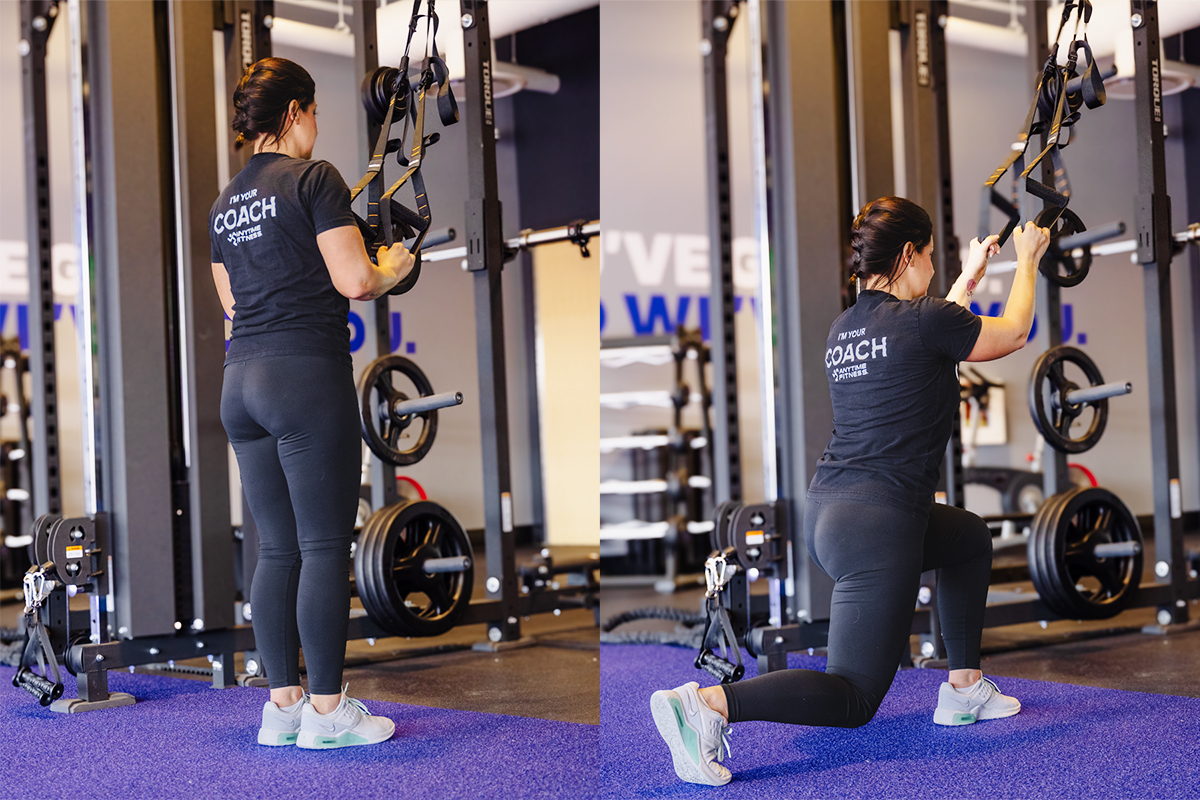
How to do a TRX Reverse Lunge:
- Stand facing the TRX straps. Hold the handles at your chest with your elbows bent. Lean back slightly as you step one foot back.
- Squat back and down on the standing leg, lowering your body toward the floor with your raised foot out behind. Keep your back flat and neutral.
- Push down through your standing foot to return to the upright position.
- Complete all reps on one side before switching to the other side.
Once you’re comfortable with TRX-supported lunging, try it without the straps.
Lunge alternative: Step-Up Lunge
This lunge alternative targets the quads, glutes, and hamstrings without actually having to lunge.
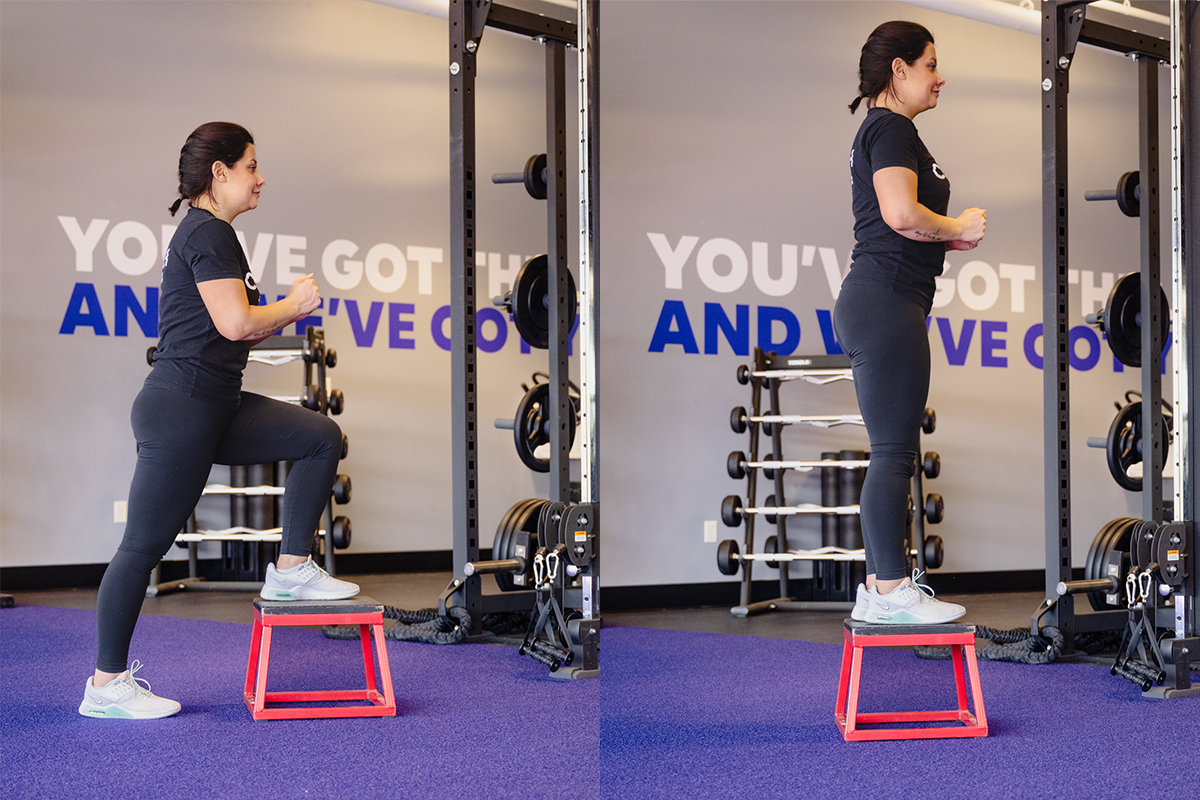
How to do a Step-Up Lunge:
- Stand upright in front of a low step with your arms at your sides.
- Place one foot up onto the step, bending your knee.
- Step up onto the step by pushing down on your front foot, keeping your knee tracking over the first and second toe.
- Step back down to the start position and repeat. Complete all reps on one side before switching to the other side.
3. Deadlift Alternatives
The deadlift is a highly technical exercise, and form mistakes are common among gym-goers, especially if you’re new to them. Master the deadlift by making sure you have the fundamentals down first.
Floor Glute Bridge
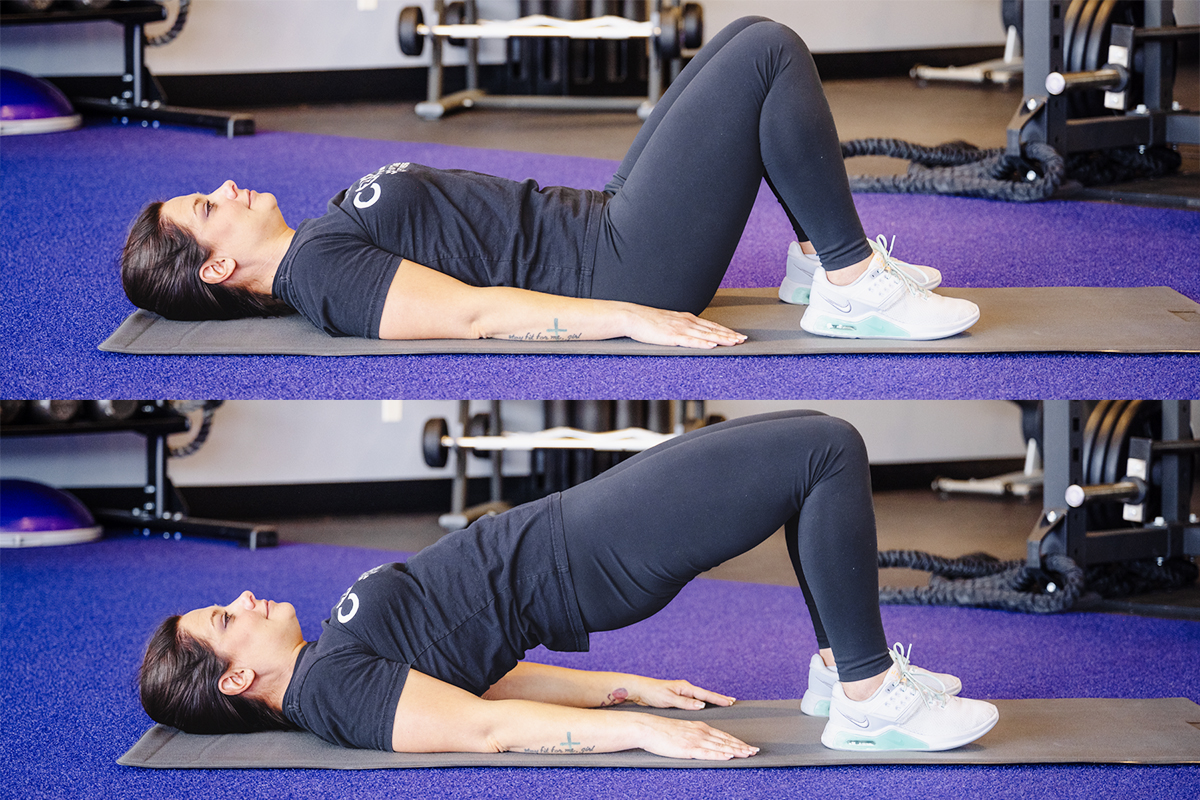
How to do a Floor Glute Bridge:
- Lie flat with the knees bent and feet flat on the floor at hip-width distance apart.
- Brace your core to hold the spine in a neutral position. Contract the glutes to lift the hips.
- You’ve reached the top once the shoulders, hips, and knees are in a straight line.
- Lower the hips back down with control, and keep the spine flat.
- Lightly touch the hips to the floor and repeat.
Banded Hip Hinge
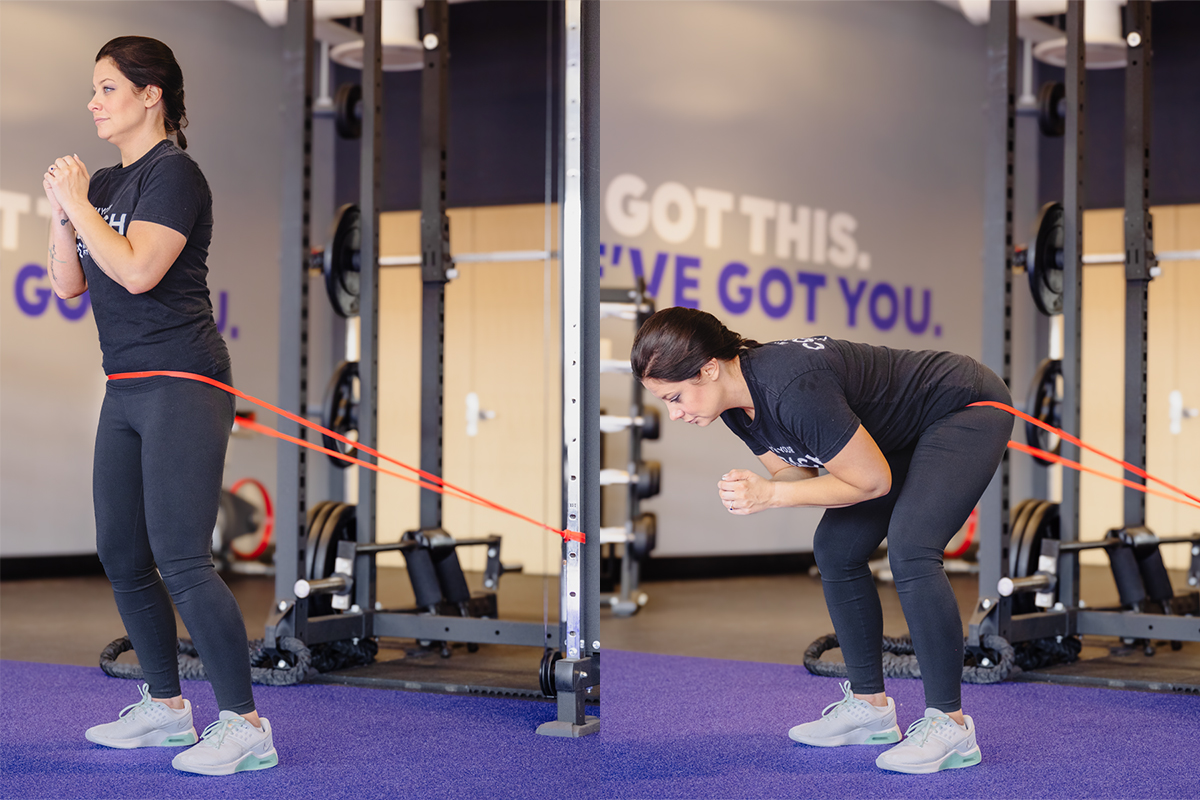
How to do a Banded Hip Hinge:
- Anchor a band close to the floor, about the height of your knees.
- Step through the band and place it near the crease of your hips.
- Step forward — putting tension on the band — and place your feet in a shoulder-width stance.
- Slightly flex your knees and hinge your hips, allowing the band to pull your hips back.
- Drive the hips up and forward against the band to the starting position. Repeat.
Goat Belly
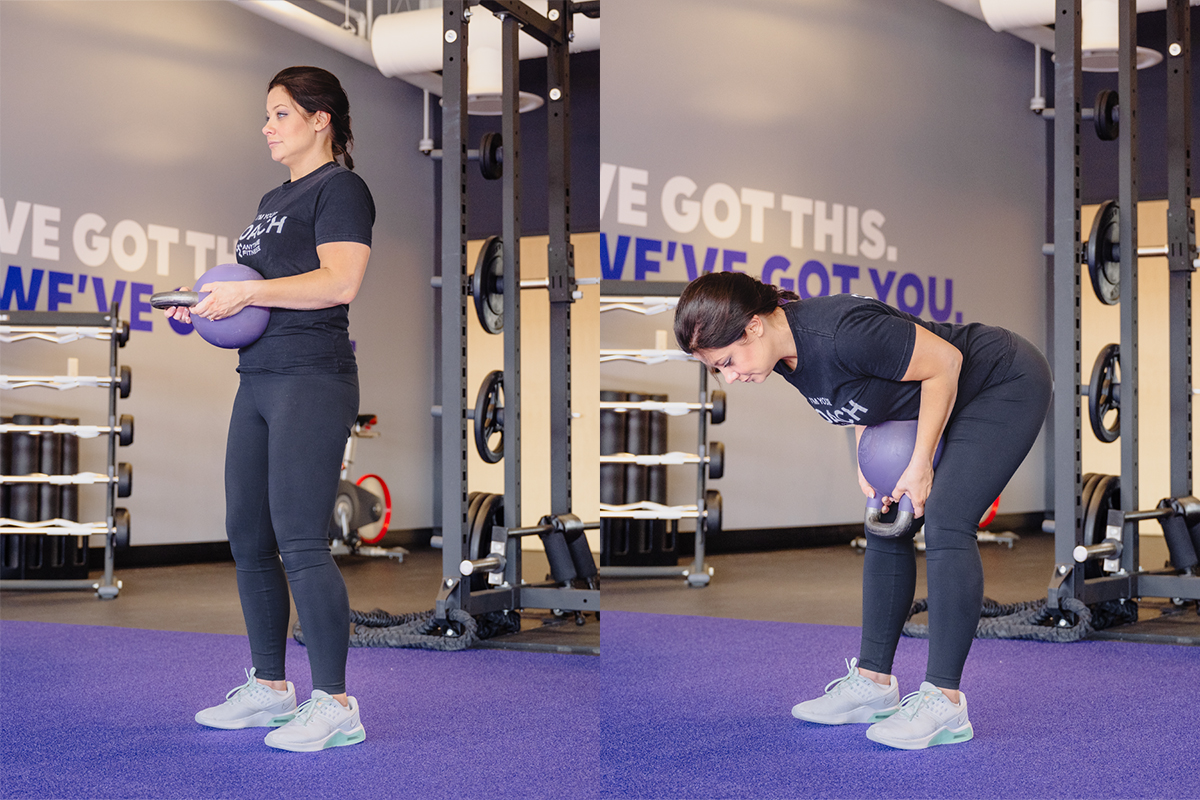
How to do a Goat Belly:
- Stand with your feet shoulder-width apart. Slightly grip the floor with your toes, but keep most of the weight just in front of the heel.
- Take a big belly brace and grab the kettlebell by its horns. Plant the base of the kettlebell into your sternum.
- Squeeze your shoulder blades together behind you as if you’re trying to crack a walnut between them.
- Unlock your knees just slightly and begin to push your hips back as far as they will go.
- When you reach your end range of motion, stand up by pushing the hips forward until they are completely extended and you’re standing tall. Repeat.
Deadlift to Box
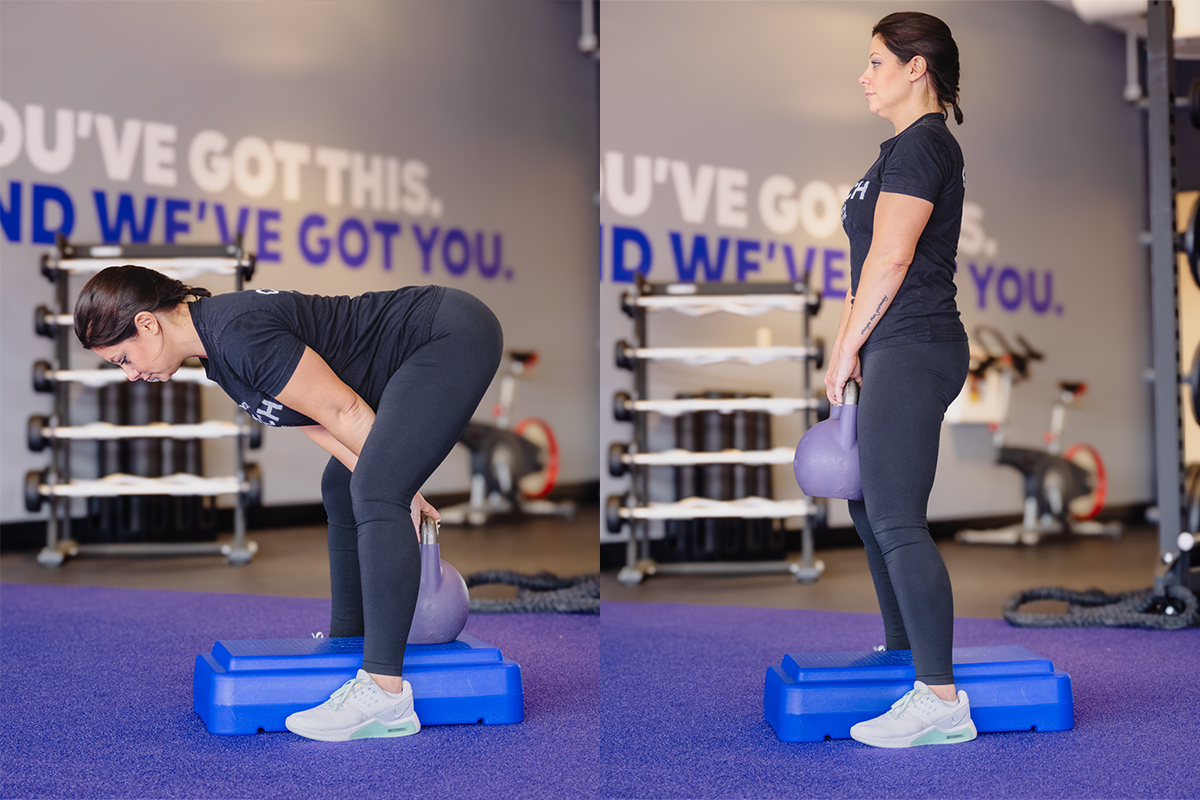
How to do a Deadlift to Box:
- Start with a shoulder-width stance over the box. Place a kettlebell on the box between and slightly behind your feet.
- Hinge the hips back and flex the knees.
- With a flat back and straight arms, grab the handle of the kettlebell.
- With shoulders back, drive the hips forward, lifting the weight off the box. Come to an upright position
- Lower the weight back down by hinging the hips back. Repeat.
RELATED: 6 Workouts for Mixing Up Arm Day
Knowing how to modify exercises is important, and making even small exercise modifications to your workout routine can make a big difference in your results. By adjusting the intensity, varying the exercises, or incorporating new equipment, you’ll keep your body guessing and make your workouts more effective.
Try implementing one or two of these modifications into your next workout and see what a difference they can make. Don’t be afraid to mix things up and try something new. Your body will thank you.
You can book a Fitness Consultation at your nearest Anytime Fitness on the Anytime Fitness App, and get personalized workouts and exercise modifications that work for your unique goals.
